Ben Carson
See all media
See all related content →
Ben Carson, in full Benjamin Solomon Carson, Sr., (born September 18, 1951, Detroit, Michigan, U.S.), American politician and neurosurgeon who performed the first successful separation of conjoined twins who were attached at the back of the head (occipital craniopagus twins). The operation, which took place in 1987, lasted some 22 hours and involved a 70-member surgical team. Carson also refined a technique known as hemispherectomy, in which one-half of the brain is removed to prevent seizures in persons with severe epilepsy.
He later became active in politics and served as U.S. secretary of housing and urban development (HUD; 2017–21) in the administration of U.S. Pres. Donald Trump.
Carson spent his early childhood in Detroit. His parents divorced when he was eight years old, and thereafter he lived with his mother and brother, spending a brief period in Boston and later returning to Detroit. Although Carson showed potential as a student, he performed poorly in school until his mother challenged him and his brother with reading and writing assignments in addition to their regular schoolwork. Carson developed a newfound interest in learning and eventually earned a scholarship to Yale University, receiving a bachelor’s degree in psychology in 1973. While at Yale, he met Lacena (“Candy”) Rustin; the couple married in 1975 and had three children. He next attended the University of Michigan, earning a medical degree in 1977, and later Johns Hopkins University Medical School in Baltimore, Maryland, where he completed a residency in neurosurgery. In 1984, after a brief stint as a senior registrar in neurosurgery at the Sir Charles Gairdner Hospital, part of the Queen Elizabeth II Medical Center in Nedlands, Western Australia, Carson became director of pediatric neurosurgery at Johns Hopkins. He was one of the youngest doctors in the United States to earn such a title. He later also held professorships in plastic surgery, oncology, and pediatrics at Johns Hopkins.
In 1984, after a brief stint as a senior registrar in neurosurgery at the Sir Charles Gairdner Hospital, part of the Queen Elizabeth II Medical Center in Nedlands, Western Australia, Carson became director of pediatric neurosurgery at Johns Hopkins. He was one of the youngest doctors in the United States to earn such a title. He later also held professorships in plastic surgery, oncology, and pediatrics at Johns Hopkins.
In his successful separation of occipital craniopagus twins in 1987, Carson used a radical approach in which the twins’ body temperatures were lowered to the point of circulatory arrest. The success of the procedure and the reconstructive techniques employed gained Carson world renown as a pediatric neurosurgeon. In 1997, in a 28-hour-long operation, he led a team of South African and Zambian surgeons in a separation of twins conjoined at the top of the head (type 2 vertical craniopagus twins). Carson was also known for having performed the first successful rescue of a hydrocephalic twin using an intrauterine shunt. The shunt served to drain fluid under high pressure away from the developing brain of the fetus and into the amniotic cavity of the mother. Carson’s techniques for hemispherectomy and craniofacial reconstructive surgery were influential in the fields of neurosurgery and plastic surgery.
The shunt served to drain fluid under high pressure away from the developing brain of the fetus and into the amniotic cavity of the mother. Carson’s techniques for hemispherectomy and craniofacial reconstructive surgery were influential in the fields of neurosurgery and plastic surgery.
In 2012 Carson published America the Beautiful: Rediscovering What Made This Nation Great (cowritten with his wife), a work reflecting his growing interest in politics. The following year he appeared at the National Prayer Breakfast, a traditionally nonpartisan event organized by the Family, a Christian movement. In his keynote speech, Carson was highly critical of U.S. Pres. Barack Obama, who was in attendance, and the resulting media attention helped make Carson a rising star in conservative circles. In mid-2013 he retired as a surgeon, and the following year he joined the Fox News Channel as a commentator. In that role, he expressed his opposition to same-sex marriage and abortion and claimed that homosexuality is a choice.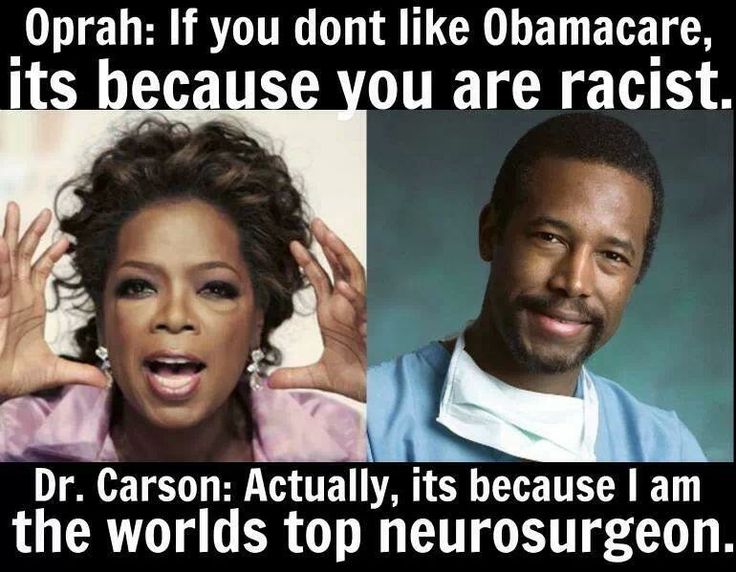 He also was highly critical of the Patient Protection and Affordable Care Act. In 2014 he wrote (with his wife) One Nation: What We Can All Do to Save America’s Future, and the following year he entered the 2016 U.S. presidential election race. In the 2015 volume A More Perfect Union: What We the People Can Do to Reclaim Our Constitutional Liberties (also written with his wife), he issued his interpretations of the mandate established by the U.S. Constitution.
He also was highly critical of the Patient Protection and Affordable Care Act. In 2014 he wrote (with his wife) One Nation: What We Can All Do to Save America’s Future, and the following year he entered the 2016 U.S. presidential election race. In the 2015 volume A More Perfect Union: What We the People Can Do to Reclaim Our Constitutional Liberties (also written with his wife), he issued his interpretations of the mandate established by the U.S. Constitution.
With his conservative agenda, Carson initially proved popular with Republican voters, and by October 2015 he was among the party’s front-runners. However, soon thereafter his campaign began to struggle when questions mounted concerning his grasp of foreign policy. In addition, his debate performances were criticized for a perceived lack of energy. After failing to win any states a month into the primary election season, Carson formally suspended his campaign in early March 2016. He was a vocal supporter of eventual winner Donald Trump, who in December 2016 announced that he would nominate Carson to serve as secretary of the Department of Housing and Urban Development. In March 2017 Carson was confirmed by the Senate, 58–41, and took office shortly thereafter.
He was a vocal supporter of eventual winner Donald Trump, who in December 2016 announced that he would nominate Carson to serve as secretary of the Department of Housing and Urban Development. In March 2017 Carson was confirmed by the Senate, 58–41, and took office shortly thereafter.
In an effort to promote self-sufficiency, Carson supported rent increases for those receiving federal housing assistance or living in public housing properties. He also sought to reduce housing regulations, including those designed to end discrimination. Such moves were met with opposition, as critics alleged that he failed to understand the complexities of the issues. In a February 2019 interview Carson suggested that he would leave HUD at the end of Trump’s term in 2021. In March 2020 he was appointed to the government’s task force handling the coronavirus pandemic. In November it was announced that he had tested positive for the disease, and he later claimed that he had become “desperately ill” but recovered after Trump intervened to get him access to an antibody treatment that required FDA approval. Carson stepped down as secretary of HUD in January 2021.
Carson stepped down as secretary of HUD in January 2021.
Get a Britannica Premium subscription and gain access to exclusive content. Subscribe Now
In 1994 Carson cofounded the Carson Scholars Fund, an organization that awarded scholarships to students who had demonstrated academic excellence and community service. He received numerous awards during his career, including the 2008 Presidential Medal of Freedom, given to him by U.S. Pres. George W. Bush. Carson also traveled as a motivational speaker, was an outspoken supporter of creationism, and was the subject of the 2009 made-for-television movie Gifted Hands: The Ben Carson Story. The movie took its title from Carson’s autobiography, Gifted Hands (1990; with Cecil Murphey).
Kara Rogers The Editors of Encyclopaedia BritannicaFor a time, the likelihood of Benjamin S. Carson, Sr., M.D. fulfilling his childhood dream of becoming a physician seemed unlikely. Growing up in a single parent home with dire poverty, poor grades, a horrible temper, and low self-esteem appeared to preclude the realization of that dream until his mother, with only a third-grade education, challenged her sons to strive for excellence. She observed successful people and encouraged her sons to emulate their behaviors, including reading. This led to behavior changes which had a profound effect on their education. In 1973, Ben Carson graduated from Yale University. He went on to receive his M.D. from the University of Michigan Medical School.
Growing up in a single parent home with dire poverty, poor grades, a horrible temper, and low self-esteem appeared to preclude the realization of that dream until his mother, with only a third-grade education, challenged her sons to strive for excellence. She observed successful people and encouraged her sons to emulate their behaviors, including reading. This led to behavior changes which had a profound effect on their education. In 1973, Ben Carson graduated from Yale University. He went on to receive his M.D. from the University of Michigan Medical School.
At the age of 33, Dr. Carson became the chief of pediatric neurosurgery at Johns Hopkins Hospital, making him the youngest major division director in the hospital’s history. This would be among an extensive list of outstanding firsts for Dr. Carson. Dr. Carson’s accomplishments have earned him a place in medical history. He performed the first and only successful separation of craniopagus (Siamese) twins joined at the back of the head in 1987. He also performed the first fully successful separation of type-2 vertical craniopagus twins in 1997 in South Africa. In his career, Dr. Carson became a professor of neurosurgery, oncology, plastic surgery, and pediatrics at the Johns Hopkins School of Medicine, and directed pediatric neurosurgery at the Johns Hopkins Children’s Center for over 29 years. He became the inaugural recipient of a professorship dedicated in his name in May 2008. He is now the Emeritus Benjamin S. Carson, Sr., M.D. and Dr. Evelyn Spiro, R.N. Professor of Pediatric Neurosurgery, having retired on June 30, 2013.
He also performed the first fully successful separation of type-2 vertical craniopagus twins in 1997 in South Africa. In his career, Dr. Carson became a professor of neurosurgery, oncology, plastic surgery, and pediatrics at the Johns Hopkins School of Medicine, and directed pediatric neurosurgery at the Johns Hopkins Children’s Center for over 29 years. He became the inaugural recipient of a professorship dedicated in his name in May 2008. He is now the Emeritus Benjamin S. Carson, Sr., M.D. and Dr. Evelyn Spiro, R.N. Professor of Pediatric Neurosurgery, having retired on June 30, 2013.
Dr. Carson’s prestigious awards include:
• the Spingarn Medal presented by the National Association for the Advancement of Colored People, the highest honor of the NAACP.
• the Presidential Medal of Freedom awarded by President George W. Bush.
• recognition by U.S. News Media Group and Harvard’s Center for Public Leadership as one of “America’s Best Leaders”.
• recognition by the Gallup Organization as one of the 10 Most Admired Men in the World.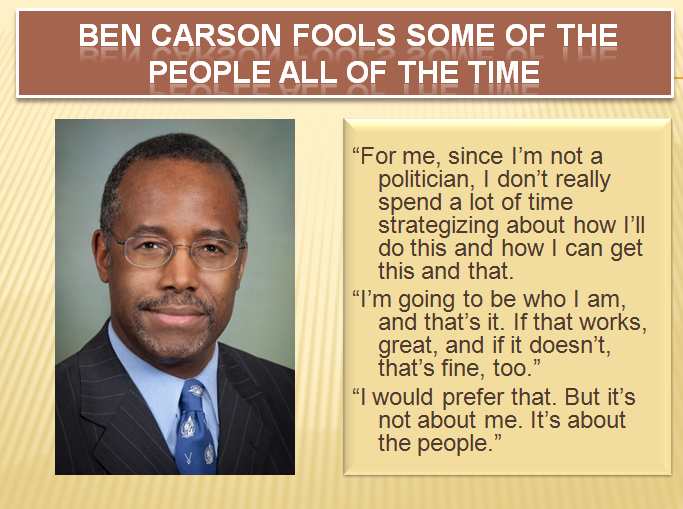
• recognition as one of the 89 “Living Legends” of the Library of Congress.
• membership of the Alpha Omega Alpha Honor Medical Society and the Horatio Alger Society of Distinguished Americans.
Dr. Carson also:
• sits on the board of directors of numerous organizations.
• is an Emeritus Fellow of the Yale Corporation, the governing body of Yale University.
• was appointed in 2004 by President George W. Bush to serve on the President’s Council on Bioethics.
• is a highly regarded motivational speaker who has addressed various audiences from school systems and civic groups to corporations and the President’s National Prayer Breakfast.
• has 70 honorary doctorate degrees and numerous national merit citations.
• has written ten books, four of which were co-authored with his wife, Candy, to whom he has been married for 46 years.
• is the feature of many children’s books meant to inspire youth to “Think Big”.
In 2016, Dr. Carson accepted the position of Secretary of Housing and Urban Development under the Trump administration. After completing his tenure as the 17th Secretary of the Department of Housing and Urban Development in 2021, Dr. Carson founded the American Cornerstone Institute. This organization is focused on fighting for the principles that have guided him through life and that make this country great: faith, liberty, community and life.
After completing his tenure as the 17th Secretary of the Department of Housing and Urban Development in 2021, Dr. Carson founded the American Cornerstone Institute. This organization is focused on fighting for the principles that have guided him through life and that make this country great: faith, liberty, community and life.
Dr. Carson and his wife, Candy Carson, co-founded the Carson Scholars Fund, which recognizes young people of all backgrounds for exceptional academic and humanitarian accomplishments. The organization has awarded more than 10,500 scholars and more than $8 million in scholarships. The Carson Scholars Fund is currently operating in 50 states and the District of Columbia, and since its founding, has installed more than 250 Ben Carson Reading Rooms around the country.
Dr. and Mrs. Carson reside in Florida. They are the proud parents of three sons and three daughters-in-law, and blessed grandparents of eight grandchildren.
 Carson, he answered some interesting questions about his career. Here are the highlights:
Carson, he answered some interesting questions about his career. Here are the highlights:To learn more information about this amazing individual, please consider buying the book Gifted Hands or one of the other books from our bookstore. Please also consider buying the children’s book, Anything Is Possible. All proceeds go to benefit the Carson Scholars Fund. We appreciate your support!
Mrs. Candy Carson is an author, philanthropist and musician. Born in Detroit, Michigan, Candy grew up in a middle-class family that stressed strong values and hard work. Her parents, a teacher and automobile factory worker, taught her from an early age to always do her best in life.
That mindset led Candy from Detroit to Yale University, where she studied with a music scholarship and got to demonstrate her talents by playing first violin with the Yale Symphony in Austria at a European premiere of Leonard Bernstein’s music.
While in college, Candy met her future husband Ben, and upon graduation, the two married and moved back to Michigan. Candy supported the family while Ben completed his medical degree at the University of Michigan in Ann Arbor.
Candy supported the family while Ben completed his medical degree at the University of Michigan in Ann Arbor.
Over the years, Candy has worked in fields such as editing, trust administration, real estate sales, conducting and music arranging. She has played the violin for orchestras such as the Ann Arbor Symphony and the Nedlands Symphony near Perth, Australia.
Candy’s passion, however, lies first and foremost in fostering a better future for America’s children. That culminated in the co-founding, with her husband Ben, of the Carson Scholars Fund more than 25 years ago. The nonprofit organization seeks to prepare the next generation for leadership and success in life through reading and education.
At first, Candy ran the organization single-handedly. Currently, the organization consists of eleven dedicated staffers, has a presence in all 50 states and has recognized more than 8,600 scholars and installed over 230 Ben Carson Reading Rooms around the country.
Candy and her husband have written three books together, including the New York Times bestseller, America the Beautiful: Rediscovering What Made This Nation Great, and One Nation: What We Can All Do to Save America’s Future. The latter addresses the changing state of the nation and how Americans can work together to ensure abundant opportunities for their children.
The latter addresses the changing state of the nation and how Americans can work together to ensure abundant opportunities for their children.
In October 2015, Candy and Ben released their third book, A More Perfect Union: What We the People Can Do to Reclaim Our Constitutional Liberties. The book discusses the principles that the Founding Fathers put forth to give ordinary citizens the power to govern their country, and reminds Americans that the Constitution belongs to all of them, not just bureaucrats in Washington.
Candy and Ben have three sons and daughter-in-laws. The recent addition of grandchildren has given Candy the new name of Mumsee!
A selection of the most important documents upon request Retirement of a woman born in 1966 (regulations, forms, articles, expert advice and much more).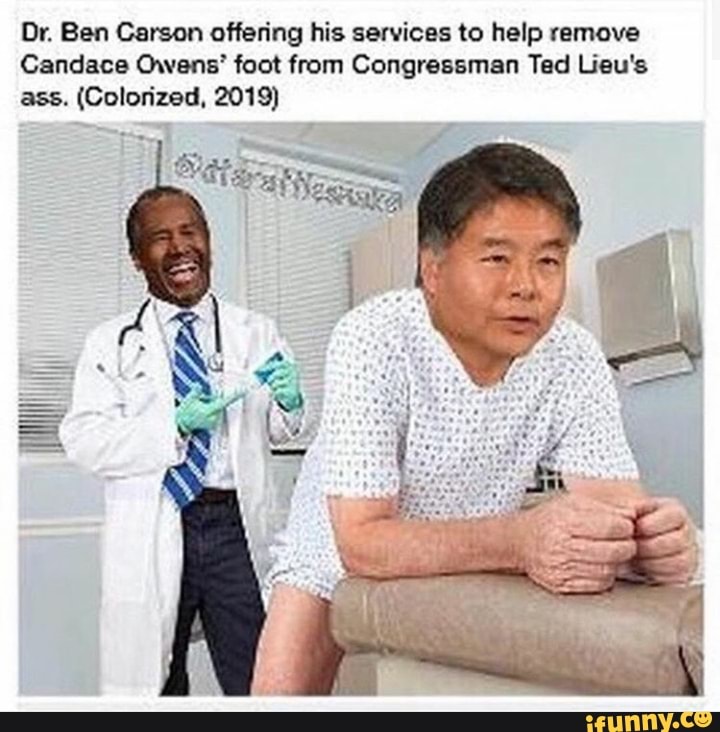
Register and get trial access to the ConsultantPlus system free of charge for 2 days
Open the document in your ConsultantPlus system Article: 9006 - downsizing right to implement?
(Ivanova I.E.)
("Head of a budget organization", 2022, N 1) The dashes in this and other columns are associated with the non-approach of the retirement age in a given year. For example, for women born in the 2nd half of 1965 years old, retirement age comes in 2022 (in the 1st half). And all women born in 1966 retire a year later - in 2024. Thus, no one will retire in 2023. We put a dash.
Register and get trial access to the ConsultantPlus system for free for 2 days
Open a document in your ConsultantPlus system:
Ready-made solution: What a personnel officer needs to know about employees of pre-retirement age
(ConsultantPlus, 2022) According to the Ministry of Labor of Russia, the pre-retirement age begins five years before the new retirement age (taking into account the transition period). The table given in Letter No. 21-2/10/P-9349 dated 12/18/2018 indicates the age when men and women begin to be classified as citizens of pre-retirement age, and the years of their birth for calculations in 2019 - 2028. In 2021, the generally established age at which the right to an insurance pension arises for women is 58 years, for men - 63 years.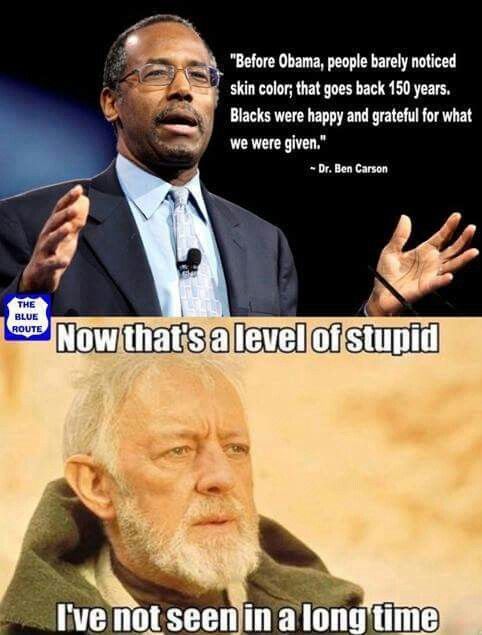 Therefore, pre-pensioners in 2021 are women born in 1964 (except for those who have been granted an old-age pension), 1965, 1966, 1967 and 1968, men - in 1959 (except for those who have been granted an old-age pension), 1960, 1961, 1962 and 1963.
Therefore, pre-pensioners in 2021 are women born in 1964 (except for those who have been granted an old-age pension), 1965, 1966, 1967 and 1968, men - in 1959 (except for those who have been granted an old-age pension), 1960, 1961, 1962 and 1963.
Ruling of the Constitutional Court of the Russian Federation of March 16, 2006 N 69-O
"On the refusal to accept for consideration the complaint of citizen Gusak Nikolai Alexandrovich on violation of his constitutional rights in paragraphs 1 and 2 Article 346.26 of the Tax Code of the Russian Federation and paragraph 3 of Article 28 of the Federal Law "On Compulsory Pension Insurance in the Russian Federation" the Constitutional Court of the Russian Federation in the said Determination came to the conclusion that, recognizing individual entrepreneurs as participants in the compulsory pension insurance system and giving them the opportunity to independently form their pension rights, the federal legislator, taking into account the specifics of entrepreneurial income, introduced a rule for them to pay insurance premiums for mandatory pension insurance in the form of a fixed payment, i. e. in a fixed amount, and determined its minimum amount that is mandatory for payment; ogo regulation of the collection of insurance premiums from individual entrepreneurs makes it possible not to make their acquisition of the right to a labor pension dependent on the receipt of income; payment by individual entrepreneurs for themselves of insurance premiums calculated according to rules different from those provided for persons making payments to individuals does not mean a violation of the constitutional principle of equality. In addition, as the Constitutional Court of the Russian Federation pointed out, by virtue of Articles 22 and 33 of the Federal Law "On Compulsory Pension Insurance in the Russian Federation", insurers making payments to individuals do not have to pay insurance premiums at the rates established by these articles to finance the funded part of labor pension for persons of a certain age group, namely 1966 years of birth and older (in 2002-2004, insurance contributions to finance the funded part of the labor pension were not payable for men born in 1952 and older and women born in 1956 and older), and, accordingly, these persons are entitled to the funded part of the labor pension do not purchase; establishing such a differentiation in relation to the collection of insurance premiums to finance the funded part of the labor pension (depending on the age of the insured person), the federal legislator proceeded from the need to ensure, by the time the retirement age is reached and the pension is awarded, the formation of pension savings sufficient to pay this part of the pension, which requires relevant time period; thus, individual entrepreneurs 1966 years of birth and older (and in 2002 - 2004 - men born in 1952 and older and women born in 1956 and older) must pay insurance premiums to the budget of the Pension Fund of the Russian Federation in the form of a fixed payment in the amount established by Article 28 of the Federal Law "On Compulsory Pension Insurance in the Russian Federation", only in the part directed to finance the insurance part of the labor pension.
e. in a fixed amount, and determined its minimum amount that is mandatory for payment; ogo regulation of the collection of insurance premiums from individual entrepreneurs makes it possible not to make their acquisition of the right to a labor pension dependent on the receipt of income; payment by individual entrepreneurs for themselves of insurance premiums calculated according to rules different from those provided for persons making payments to individuals does not mean a violation of the constitutional principle of equality. In addition, as the Constitutional Court of the Russian Federation pointed out, by virtue of Articles 22 and 33 of the Federal Law "On Compulsory Pension Insurance in the Russian Federation", insurers making payments to individuals do not have to pay insurance premiums at the rates established by these articles to finance the funded part of labor pension for persons of a certain age group, namely 1966 years of birth and older (in 2002-2004, insurance contributions to finance the funded part of the labor pension were not payable for men born in 1952 and older and women born in 1956 and older), and, accordingly, these persons are entitled to the funded part of the labor pension do not purchase; establishing such a differentiation in relation to the collection of insurance premiums to finance the funded part of the labor pension (depending on the age of the insured person), the federal legislator proceeded from the need to ensure, by the time the retirement age is reached and the pension is awarded, the formation of pension savings sufficient to pay this part of the pension, which requires relevant time period; thus, individual entrepreneurs 1966 years of birth and older (and in 2002 - 2004 - men born in 1952 and older and women born in 1956 and older) must pay insurance premiums to the budget of the Pension Fund of the Russian Federation in the form of a fixed payment in the amount established by Article 28 of the Federal Law "On Compulsory Pension Insurance in the Russian Federation", only in the part directed to finance the insurance part of the labor pension.
From January 1, 2019, a new basis for early retirement is provided for citizens who have a long work record. Women can use the right to retire 2 years earlier than the generally established deadlines if they have a seniority of 37 years and men - 42 years, but not earlier than reaching the age of 55 for women and 60 for men.
Since the retirement age will be raised in stages, in 2019, if you have a long service, you can become a pensioner ahead of schedule only six months ahead of schedule. General retirement age in 2019year is respectively 55 years and 6 months for women and 60 years and 6 months for men.
For example: a man with a date of birth - 05/15/1959 has the right to retire at 60 years and 6 months, that is, 11/15/2019. However, if he has 42 years of experience, he can retire at 60 - that is, 05/15/2019.
If a citizen has worked out the above number of years of work experience in 2022, for example, it will be a woman born in 1966, then she has the right to retire at 56 years old, 2 years earlier than the generally established period. nine0015
nine0015
What is included in the length of service for early retirement?
- For the appointment of an early pension due to long service, the periods of work that were performed on the territory of the Russian Federation and for which insurance premiums were paid to the Pension Fund, as well as periods of receiving benefits for compulsory social insurance during a period of temporary disability are taken into account. Non-insurance periods, such as: military service, parental leave, periods of receiving unemployment benefits are not included in the length of service. nine0015
Residents of St. Petersburg and the Leningrad Region can check the current experience in the Personal Account of a citizen on the PFR website or on the public services portal. Information about the experience can also be obtained from the client services of the PFR and the MFC.
If you think that any information is not taken into account or not taken into account in full, contact your employer to clarify the data and submit it to the Pension Fund.
Statistics:
As of May 1, 2019year on the above grounds, pensions were assigned to 162 citizens, of which 26 were men and 136 were women.
for information:
TECHIPS OF PERFORMANT OF PERFORMANCE
| Men | Release year for retirement with 42 years of service | ||||
| Retirement age giving the right to an old-age pension | Entitlement to an insurance pension | Retirement age with 42 years of service | |||
| 1959 | 60 years 6 months | II half of 2019 H1 2020 nine0132 | 60 | 2019 | |
| 1960 | 61 years 6 months | H2 2021 H1 2022 | 60 | 2020 | |
| 1961 | nine0012 63 | 2024 | 61 | 2022 | |
| 1962 | 64 | 2026 | 62 | 2024 | |
| 1963 onwards nine0132 | 65 | 2028 etc. | 63 | 2026 etc. | |
| Year of birth | Women | Release year for retirement with 37 years of service | |||
| Retirement age | Entitlement to an insurance pension | Retirement age with 37 years of service | |||
| 1964 | 55 years 6 months | II half of 2019 H1 2020 | 55 | 2019 | |
| 1965 | 56 years 6 months | H2 2021 H1 2022 | 55 | 2020 | |
| 1966 | 58 | 2024 | 56 nine0132 | 2022 | |
| 1967 | 59 | 2026 | 57 | 2024 | |
| 1968 onwards | 60 | 2028 etc. | |||